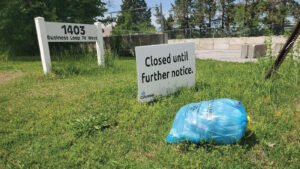NAP and YOP credits help boost nonprofits, but local leaders say individual donations are still key to success.
How many diapers will $1,483.28 buy?
That’s one question that helps illustrate how Columbia nonprofits strive to make every dollar count, no matter how big or small the donation is. And the answer — that amount buys up to one month of diapers for 20 infants — provides vital perspective on the continued need for businesses and individuals to become ongoing donors for Columbia’s nonprofit organizations.
Small dollar donations and individual donors still make up the majority of giving to Columbia’s more than 150 nonprofits that provide service and fundraising for a bevy of causes and supplies, from foster care and art and culture to diapers and job training, budget training initiatives and a variety of social programs.
Businesses also have donation opportunities that can translate to tax credits, letting those entities claim from 50 to 70 percent of donations over $500 against their state income tax liabilities. Those credits come via the Neighborhood Assistance Program (NAP) and Youth Opportunities Program (YOP) that a number of local nonprofits offer.
And as the diaper example demonstrates, the needs are growing even as donors are being pinched by inflation and economic uncertainty.
First Chance for Children (FC4C) is a case in point. Executive Director Gay Littiken said the local nonprofit began distributing diaper packs to families in need four years ago, ending that year with a total distribution of 7,000 diaper packs. This year, the diaper pack program — one of FC4C’s four target areas — is on a trajectory to give out 28,000 diaper packs.
Littiken was a guest at the October 23 Columbia Kiwanis Club of Missouri meeting, where the club presented checks for $1,483.28 to both Coyote Hill and First Chance for Children. The funds were an even split of the proceeds of the Kiwanis Kutest Kritter Kontest. (COMO Magazine was the social media sponsor for the fundraiser.)
The Missouri Department of Economic Development (DED) awarded Littiken’s organization with $111,250 in NAP tax credits through May 2024, with about $70,000 in tax credits remaining.
“Obviously, we’re pushing that right now as we end the year because it’s just a good opportunity to make a donation and then have 50 percent of those tax credits,” she says.
NAP credits are designed to help implement community or neighborhood projects that will strengthen economic development, funding projects in the categories of job training, education, crime prevention, community services, and physical revitalization.
Other recent Columbia and Boone County NAP credit recipients include:
Coyote Hill, Harrisburg, $348,415 in available credits for donors
Coyote Hill will use the NAP credits to expand its foster care services program. The program gives foster families additional support via family nurture groups, life skills training, education enrollment program, community groups, and respite facilitation.
The Food Bank for Central & Northeast Missouri, Columbia, $250,000
The funds will help provide food to people experiencing food insecurity across 32 counties and serve as part of a regional disaster relief network.
Thompson Center for Autism & Neurodevelopment, Columbia, $231,967
The credits will help raise funding toward expanding services to support the growth of comprehensive clinical and research services and improving access for at-risk children and families at the Thompson Center.
Other local NAP credit awards included:
- Central Missouri Stop Human Trafficking Coalition: $41,906.
- Child Abuse & Neglect Emergency Shelter Inc. (Rainbow House): $200,000.
- City of Refuge: $241,753.
- First Chance for Children: $111,250.
- Grade A Plus Incorporated: $30,103.
- In2Action: $95,002.
- Job Point: $135,000.
- Love Columbia Corp.: $500,000.
- Ronald McDonald House Charities of Mid-Missouri: $250,000.
- Voluntary Action Center: $249,9978.
Coyote Hill was also awarded $199,618 in YOP tax credits for 2023 to benefit the organization’s equine-assisted activities program, which is offered to all at-risk children in the mid-Missouri area, with an emphasis on teaching children coping skills and emotional health intelligence skills.
Boy and Girls Clubs of the Columbia Area also received $200,000 in YOP tax credits to offer in 2023. Funds raised via the YOP credits will provide after school and summer enrichment programs to Columbia and the surrounding Boone County area. Those programs focus on communication, academic skill building, problem-solving, literacy, self-expression, emotional intelligence, physical and mental wellbeing, decision-making skills, and job readiness.
In 2022, Job Point used NA credits to complete bathroom renovations, with a majority of the work donated by Coil Construction as an in-kind contribution. NAP also helped with replacing HVAC units, and the replacement of ceiling tiles and energy efficient lighting fixtures. The space is used to provide occupational skills training to prepare participants for employment in the health care and construction industries.
On a national scale, nonprofit organizations report a decrease in individual and smaller donations, which some groups cite as one result of the increase in the standard deduction that taxpayers may claim on their federal income taxes. In other words, the increase in that deduction could mean there’s less incentive to make donations that in previous years might be claimed when itemizing deductions to gain the most favorable tax rate or refund.
Littiken doesn’t think the standard deduction increase has stymied giving to FC4C. And for businesses and corporations, the NAP and YOP credits are still good options, and Littiken and her team do all of the work on filing the needed forms for donors. She adds, “We make the process as easy as possible.”
Columbia’s nonprofit and fundraising community is unique in that most organizations and donors seek out shared missions and interests, which leads to relationships. And that’s the key to sustainability, says Trent Rash, executive director of the Missouri Symphony Society (MOSY).
With more than 150 nonprofits vying for contributions, Rash says “corporate dollars are already spread a little thin.”
“We’ve been around for 53 years so we’ve certainly seen Columbia change in many ways,” he adds, noting that there certainly are more arts organizations than the number that existed when MOSY was founded in 1970. MOSY continues to build connections with corporate sponsors but is focusing more energy on connecting with individual donors who are “mission-driven.”
“It’s all about the relational aspect; not the transaction,” Rash explains. “It can be really easy when you’re working with corporate sponsorship for it to be transactional. ‘Hey, can I have money,’ ‘here’s your money …’ but we want to build a real relationship and a sustainable connection with that person, so that you can have them as a donor for many, many years.”
Sarah Leonard, senior associate at New Chapter Coaching, which has a lengthy client base of local nonprofits, smiled as Rash described the relational versus transaction dynamic.
“It’s like he’s replaying conversations we’ve probably had and I’m sure he’s had with other folks,” Leonard says. “How do we connect people to the impact that we’re trying to have on the community, the changes they’re trying to make to improve lives — all the ways we’re working to make our communities better.” Building a relationship that’s rooted in those shared interests and values helps create an ongoing donor base, she adds.
Rash adds, “It’s a win-win. You’re creating a relationship and you’re a part of something that’s helping your community — and creating a wonderful social impact for your community.”
Leonard continues, “Those are the relationships that will sustain our organizations and institutions.”
Whether influenced or motivated by tax credits, Rash says it will be individual donors who help local nonprofits meet their needs.
“If you have told your story and they want to be a part of it, and they want to give to that, they’re going to do it regardless” of the tax implications, Rash adds. “For most people, if we’re doing our jobs, they’re going to be committed to giving.”








